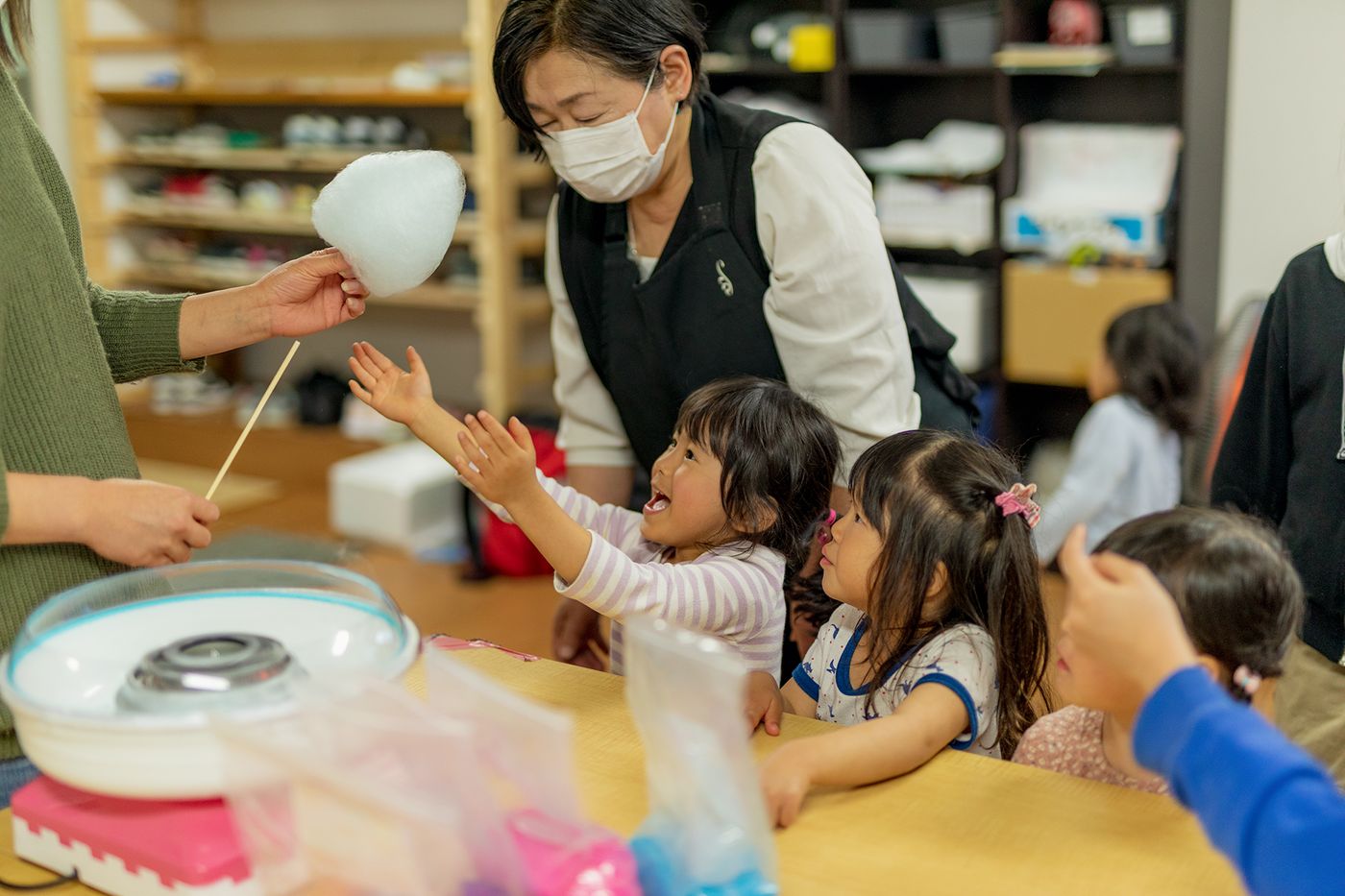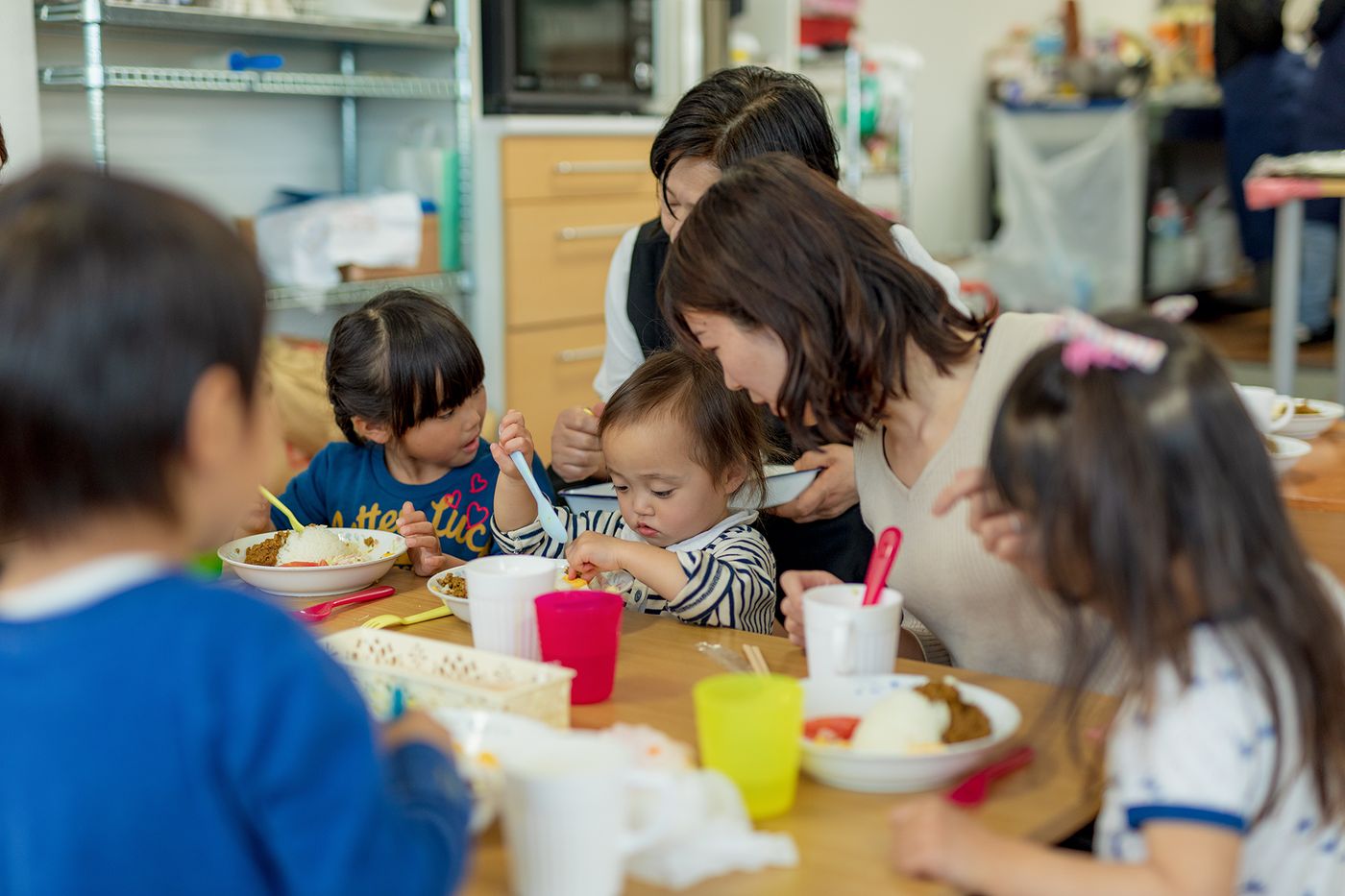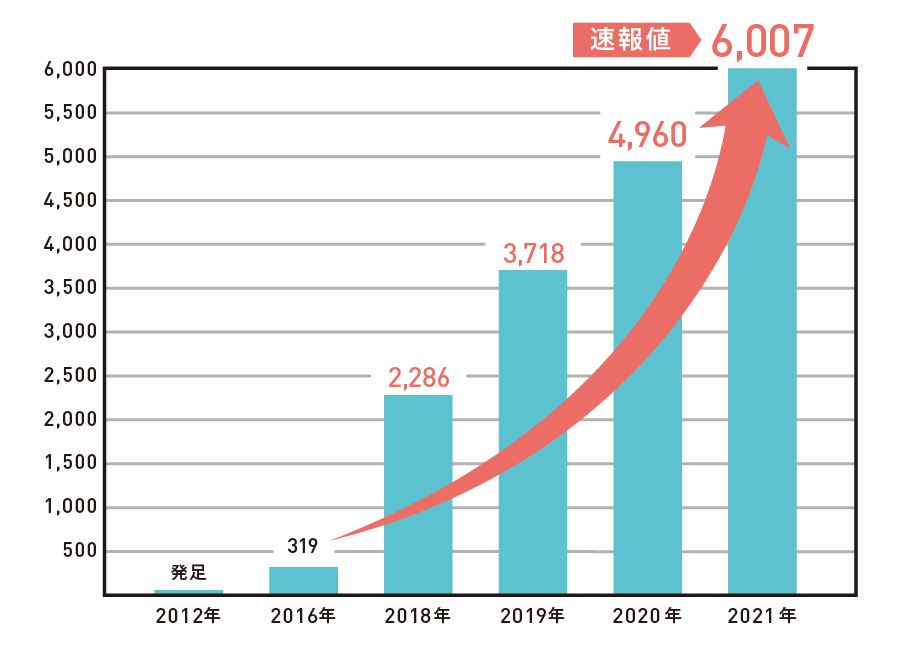From child poverty to solving the problem of "solitary food", what is Japan's "children's canteen"?

All-you-can-eat vegetable store
The name "Children's Canteen" originally came from the "Anyway Fruit and Vegetable Store Thank You (気まぐれ八百屋だんだん, だんだん means "thank you" in Shimane dialect)" in Ota Ward, Tokyo. Although it is called a fruit and vegetable store, it is just like the name of the store. The boss can do whatever he wants, and it is not surprising that everything is available. In addition to selling vegetables and fruits, it is also a cooking classroom, sign language classroom, remedial teaching... and other community exchanges. Space.
Hiroko Kondo, a dental hygienist (an hygienist), believes that eating well will help you take care of your teeth, so she cooperates with a farmer she knows to start a business that regularly delivers fruit and vegetable boxes every weekend. Later, because of the requests of customers, sometimes he would sell vegetables and fruits at the store on weekdays, and he started to run "A Free-Washed Vegetable and Fruit Shop (気まぐれ八百屋)".
From remedial teaching to children's cafeteria
In 2009, the daughter of the proprietress went to high school. Because her daughter said "I don't know math," she found a teacher she knew as her child's tutor. But Hiroko Kondo thought that it is rare to have such resources. It’s a pity that only my daughter comes to study. I’ll just turn the fruit and vegetable store into a super-low-cost cram school. As long as the children only need to hold one coin, whether it is 1 yen or a toy coin , there will be volunteers to teach you homework.
One day, the vice-principal of the elementary school I knew told Hiroko Kondo that there were children in the school who only ate one banana every day in addition to a nutritious lunch. Later, the child was sent to a placement agency (child care facility). When Hiroko Kondo heard about this, she thought that there must be other children in the same situation, and decided to continue to expand the service items of the fruit and vegetable store. In 2012, the "Children's Canteen" was launched, as long as the children only need to hold 1 piece of low value You can dine with a 100 yen coin.
A space where children can easily participate
Hiroko Kondo, who coined the term "Children's Canteen", emphasized that the original intention of launching the "Children's Canteen" was to create a space where children can easily participate, so it was named "Children's Canteen", but the purpose of the children's canteen has always been to prevent "Solitary food" means eating alone. Whether it is an adult or a child, anyone who wants to eat with other people can go to the children's cafeteria and eat with everyone.

The popularity of children's cafeterias
In fact, the children's cafeteria is not a new concept. From the past to the present, there must be active and enthusiastic neighbors everywhere who help each other, and will take the initiative to help take care of the children in the community. Before Hiroko Kondo coined the term "children's cafeteria", Hiroko Kondo's fruit and vegetable store has long been an important base in the community, and volunteers are always here to accompany the children to read.
But it cannot be denied that Kondo Hiroko was the first person who came up with the term. It would not be an exaggeration to say that Kondo Hiroko was the first person to create a children's cafeteria.
In addition, Kondo Hiroko's fruit and vegetable store was very famous before it opened a children's canteen, and there were many media interviews. After Hiroko Kondo launched the children's cafeteria, other groups (such as: NPO legal person 豊shimako どもWAKUWAKUネットワーク) followed the use of the term kid's cafeteria, which greatly increased the media exposure of the kid's cafeteria. Many people want to open children's canteens in their own communities after seeing the news reports about children's canteens. There are even non-profit organizations (むすびえ) that can teach everyone to open children's canteens in one stop . Various factors have contributed to the popularity of children's canteens in Japan. blossom everywhere.

Poverty of children
The children's cafeteria will become popular at this time, and it is also related to the new law promulgated by Japan in 2013, "The Law of Promoting the Law of Poverty and Poverty".
At present, it is believed that 1 in 7 children in Japan is relatively poor. Minors do not have the ability to make a living by themselves, and the family's economic situation will be reflected on the children. Therefore, the problem of "child poverty (子どもの poverty)" is an indicator of observation. One way to judge is to look at the ratio of “relative poverty (relative poverty)”, that is, the ratio of household income less than half of the national median household disposable income (disposable income), as an indicator.
The relative poverty rate is rising year by year
In fact, since the 1980s, the (relative) poverty rate of children in Japan has been rising year by year, and it is now one of the later stages of the OECD countries.
According to the latest data from the Ministry of Health, Labour and Welfare of Japan, the median disposable income of Japanese households in 2018 was 2.53 million yen, and households whose disposable income did not reach 1.27 million yen (equivalent to only 105,833 yuan per month) were below the poverty line. In 2018, Japan's relative poverty rate was 15.4% (13.5% for children under the age of 17). If it is a single-parent family, the relative poverty rate is as high as 50.8%.
Another statistic pointed out that among children who had to be placed in care institutions in 2013, the most common reason was parental abuse (37.9%), followed by family economic factors, namely poverty (11.7%). ). Even taking a step back, some parents use their children as an outlet to vent their emotions, and abuse or neglect their children. The factors behind this may also be related to being driven to a desperate situation by poverty.
Relative poverty is not easy to detect
Different from the state of absolute poverty (absolute poverty), even children have problems with the most basic food, clothing and housing. Relative poverty is not easy to find, but it does affect children's diet and educational opportunities.
In this context, children's canteens are seen as a solution to children's poverty. Coupled with the hype of the media, there were only 21 children's canteens in Japan at the end of 2013, which increased to 319 at the end of May 2016, and increased to 3,718 in June 2019.

Not a canteen for kids
But most importantly, the original concept of the children's canteen was not "a canteen for poor children", nor a "canteen designed for children". Apart from the ancestor of the children's canteen, "Thank you for the fruit and vegetable store you want", children's canteens all over Japan have different practices, but the core concept is the same: let everyone come in comfortably and have a meal.
Nearly 80% do not stipulate the qualifications of participants
According to the latest statistics , there are about 6,000 children's canteens in Japan, of which 78.4% do not stipulate the qualifications of participants, and do not limit the age, nationality or income of those who come to eat; In the children's cafeteria, there are seniors participating in the meal. The remaining 20% of children's canteens with limited dining qualifications mostly stipulate that adults cannot dine alone, or are only limited to single-parent families.
Therefore, it can be clearly seen that the children's cafeteria is definitely not an environment where "only children can participate". This situation does not only happen to children, but also to the elderly. Furthermore, if you want to create an environment to prevent "solitary food", it is very important to let this environment have people, preferably a variety of people, which is not easy for people who live in a small circle and are usually not easy to contact. For other people, in the children's cafeteria, you can get in touch with all kinds of people, so as to get rid of the feeling of loneliness and loneliness, and make this place a place where there are people at all times, and at the same time it is very human.
It is impossible to only let children participate
Another factor is implementation issues. Even if it is a children's canteen mainly for children, there is no way to "only allow children to participate". If a child is brought by his parents today, it is difficult for the operator to stipulate that "only children can participate, and parents must wait outside", because the children's cafeteria is not a nursery center or a parenting class. If today is a children's canteen that mainly serves single parents or disadvantaged families, when someone comes to visit, you can't ask the other party to provide proof of financial resources or single parent, and you must be qualified to eat.

There are two types of children's cafeterias
This question will come back. The current children's canteens can be roughly divided into two categories: one is for children's canteens for communication, making the children's canteens a community public space, and anyone is welcome to participate; the other is mainly to provide support. The children's cafeteria of , hoping to find people in need through this space and give individual assistance.
If it is the latter, how can the children's cafeteria, which mainly provides support, "find" these relatively disadvantaged groups in society, and also ask them to "take the initiative to step in"? This is a common problem for helping workers, and in the process of operation, it is easy to fall into the dilemma of "whether this approach can really help those in need".
A similar dilemma will also occur in children's cafeterias, which mainly focus on building community public spaces. In particular, I hope to make this space a children's cafeteria that can be easily integrated by men, women, and children. It may also be "too enthusiastic" and actively hope that the elderly in the community will "eat together", but it is limited by the name "Children's Cafeteria". Some seniors are reluctant to go to the children's cafeteria, feeling that they are still young and need no help, and that they will be looked down upon if they go.
But no matter what kind of children's canteen, the ultimate goal of the children's canteen is to create a society that "will not let anyone go".

The number of epidemics has soared, and whether it can operate for a long time remains to be tested
Although during the epidemic, children's canteens centered on "meal sharing" will also be affected, and some places will instead send meals to reduce contact opportunities. However, in the past two years of the epidemic, Japan has added 1,000 children's canteens every year, and the total number of children's canteens has not decreased but increased.
Makoto Yuasa, the chairman of the aforementioned non-profit organization Children's Cafeteria Support Center (accredited as an NPO legal person Nationwide Canteen Support センター・むすびえ), a non-profit organization that teaches everyone to open a children's cafeteria, believes that during the epidemic, everyone became lonely, which may be the reason for the children's cafeteria to be in the epidemic situation. The reason for the continuous increase in the number during the period.

However, whether these children's cafeterias can continue to operate after the epidemic is over, it will test the skills of the organizers. In fact, to operate a children's canteen, it mainly depends on the participation of local people with lofty ideals. Some people contribute money (food materials, venues), and some people contribute (actually volunteer on the spot to help). If there is no way to continue the operation, It is really possible to close the stall.
At present, some local governments have provided special subsidies for the children's canteens organized by these people with lofty ideals, which can help the operation of the children's canteens. However, if the children's canteens are to operate for a long time, they still need donations from all walks of life, or adjust the opening time. , reduce the number of activities to once a week or once a month.
This article is simultaneously published on Ishikawa Kaori's Japanese Current Affairs まとめ translation website.
Like my work? Don't forget to support and clap, let me know that you are with me on the road of creation. Keep this enthusiasm together!


- Author
- More